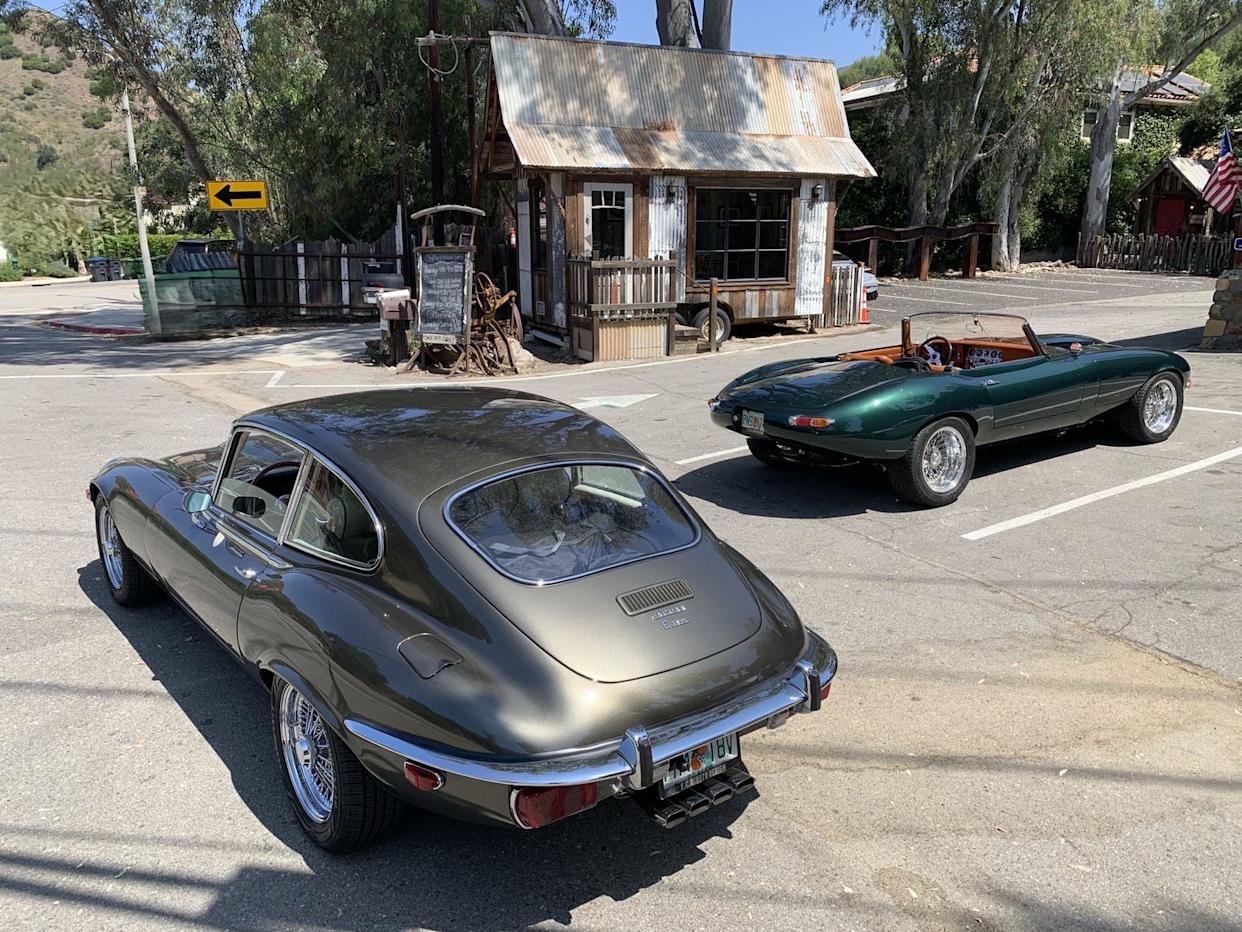
ECD has expanded its Land Rover business to include Jaguars.
Here are two of them, a 1969 E-Type GTO V12 and a 1973 Series III Coupe.
As Tommy's stepfather said, "What they want ain't cheap, 's a pity."
When I was a kid, the neighbor had a Jaguar E-Type. He wore sunglasses day and night, and polyester slacks and shirts that looked like an ad from the Broadway Department store. He never spoke except to complain about people stepping on his lawn.
Was he cool, or a jerk? Who cares? He had an E-Type.
One morning, as I was walking to school (we walked to school back then—without getting run over, robbed, or abducted by a cult), the neighbor was pulling out of his driveway.
“Want a ride?” he asked.

In those days, not every single person on the planet was a kidnapper or a mass murderer. That happened later, with the advent of modern television news.
The door opened—with its own cutout down the fender so you could get your legs inside—and in I climbed. There were no seatbelts. Of course there were no seatbelts, because back then not every single drive in a car resulted in fiery death like Volvo wants you to believe. Back then, if we crashed, we died like men. Even in 5th grade. And we liked it.
He fired the engine. It was a V12. Whoa. I remember the feeling. His engine had eight more cylinders than our MG and twice as many as our Ford. We had MGs back then, so maybe the E-Type was a step up. Who knows?
The E-Type—that’s what it said on the trunk—sat low on the road, the hood seemed to disappear over the horizon, and the engine sounded like someone had tuned it like the entire brass section of the LAPD band, which had recently performed at our school to show that cops are cool and not the squares portrayed on TV. I was easily swayed.
Burble-dee-burble-dee-brap.
Off we went. He complained about his kids. “They think they know everything.” Damned kids.
But the Jag was fine. It made me forget all about my previous aspirational vehicle, the 1964 Chevy Impala with custom paint all around, hydraulics in the back, and those little dingleberries all along the windshield header. This was about the time the band War, one city over in Wilmington, came out with Low Rider. My new aspirational vehicle was a Jag E-Type. I’d call it the E-Type, not the XKE.
It would be about 40 or 50 more years until I drove an E-Type, a big yellow one that belonged to a freelance photographer and Brit I’d met through work. I was… disappointed. It felt far too much like a large truck. Still looked good, but didn’t drive anywhere near as well as it looked.
So when ECD offered drives of not one but TWO E-Types, I said, in a high-pitched squeaky voice, “Yes.” With all the tuning the ECD crew did, they would finally give the car performance to match its looks.
ECD may be known better for their Range Rovers and Land Rover Defenders. We drove one eight years ago with a 6.2-liter Chevy Corvette LS3 V8 mated to 4L80E four-speed automatic. That powertrain was making 430 hp and 424 lb-ft of torque. In a Defender it wasn’t nearly as unstable as you’d have thought. It was actually fun.
So have they done the same thing with these two E-Types? Yes and no.
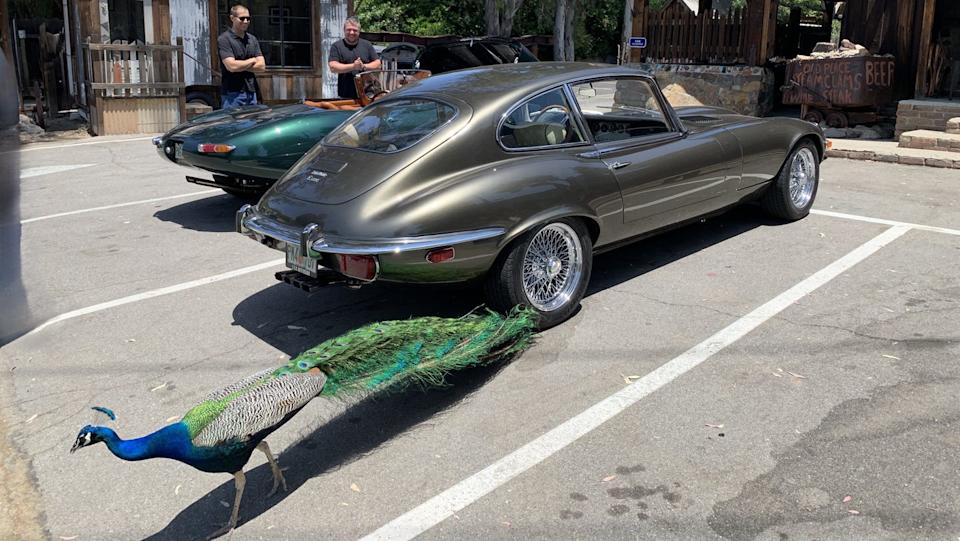
The Coupe, the 1973 E-Type Series III Coupe you see here, sported an LT1 crate V8 mated to a 10-speed automatic. It was set up as a boulevardier.
The convertible was a whole new car, just about.

Officially, it’s a 1969 E-Type GTO. It not only had a stroked V12 lengthened from 5.3-liters of displacement to 6.8 fed through an army of throttle bodies, making “an estimated” 450 hp mated to Tremec five-speed manual, but it also had an all-new look.
Every body panel is new, hammered out by guys named Nigel back home in Jolly Ol’ then shipped to ECD’s current world headquarters in Kissimmee, Florida. The panels might most closely resemble a Series I, but you make your own decision about that.
The convertible, known as the Connecticut Car because they name all their cars (just like Singer!), also has new subframes from the Series III, a hand-built exhaust, mechanical limited-slip differential, Fossway brakes, and Gaz manually adjustable coil springs.
Inside, there is Lucente Hercules tan leather surrounding a dashboard filled with clever modern touches up to and including Bluetooth audio.

So it had to be better than the E-Type I drove at Pebble Beach many years ago, right?.
My first drive was in the GTO. The top was down so getting in was easy. I slithered in like I was wearing polyester from The Broadway, twisted the key, and fired it up. Nice sound.
The Tremec five-speed felt like it was ready to handle all the torque the V12 could twist its way, which is to say, it was a little stiff to get into gear. The clutch was likewise a little stiff, but that’s why you use the leg machine at the gym.
Off and underway, the car felt fine, I rolled down Mulholland in the Malibu Hills like I’d just optioned a screenplay. We cut over to Kanan-Dume Road, a wide-open, potentially higher-speed thoroughfare, and had at it. The sound of the V12 echoed off the canyon walls and through the tunnel.
Despite the new antiroll bars, wider wheels and tires, and a new Ford steering rack controlled by a Momo wooden wheel, the car wandered around on Kanan-Dume Road. It was probably a lot better than the original, and better still than a car that had been sitting for years unrestored, but it still wandered.
Likewise, the suspension, though no-doubt leagues better than original, still—dare I say?—wallowed a bit. Not a lot, not uncontrollably, but more than I expected. Of course, I had just gotten out of an Aston Martin. But any modern car would feel better. You can’t approach this as you would a modern car, especially a modern GT or sports car.
“It has character and we didn’t want to eliminate the character by over-engineering it,” said Tom—or maybe it was Elliott—Humble, one of the two brothers who started ECD.
Once you accept that, you understand what these two Brit brother blokes are trying to do, and how they’ve succeeded.
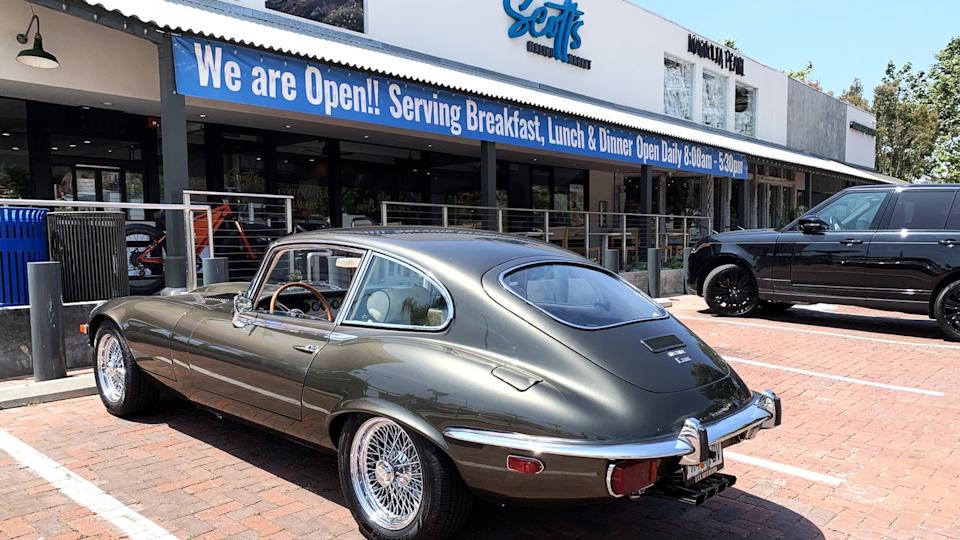
Down at Scott’s Malibu Market (breakfast, lunch, and dinner, open daily 8:00 a.m to 5:30 p.m.), I swapped the GTO convertible for the Series III Coupe. Thus girded, my acceptance of the Coupe was swift. Character meant being involved in the process of driving, not hands-free like a cell phone. You have to shift, steer, and brake in these. You are part of the process, not just some passenger waiting for someone to hit you so you can sue.
The LT1 crate motor in the ’73 E-Type Coupe was more than up to the task of driving. Its suspension was a vast step up from whatever Coventry was rolling out the doors 50-some years ago. I was involved in the process of driving, and because of that, the ECD made sense.
Of course, it ain’t cheap. The GTO stickered at $599,000, and the coupe was $399,000. But an unrestored E-Type goes from over 100k nowadays. You could pay close to 200k. Then, as you sorted it out with another guy named Nigel, part-by-part, fix-by-fix, you could easily spend 300 grand total before it even ran properly. So in that respect the ECD Jag is correctly priced. Just let me drive it when you buy it, will ya?

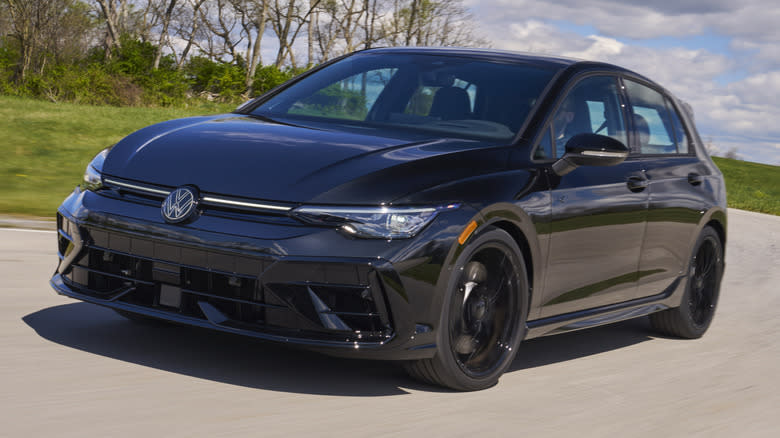
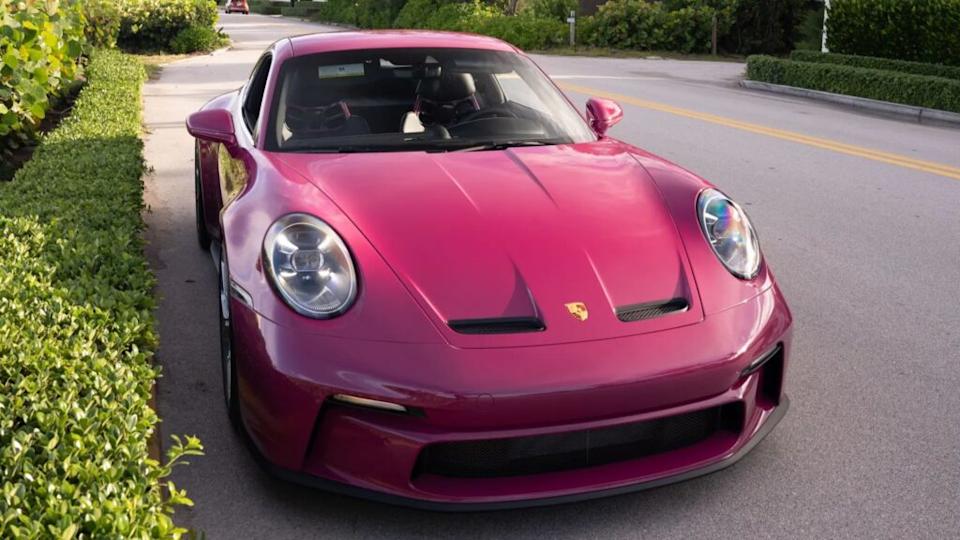

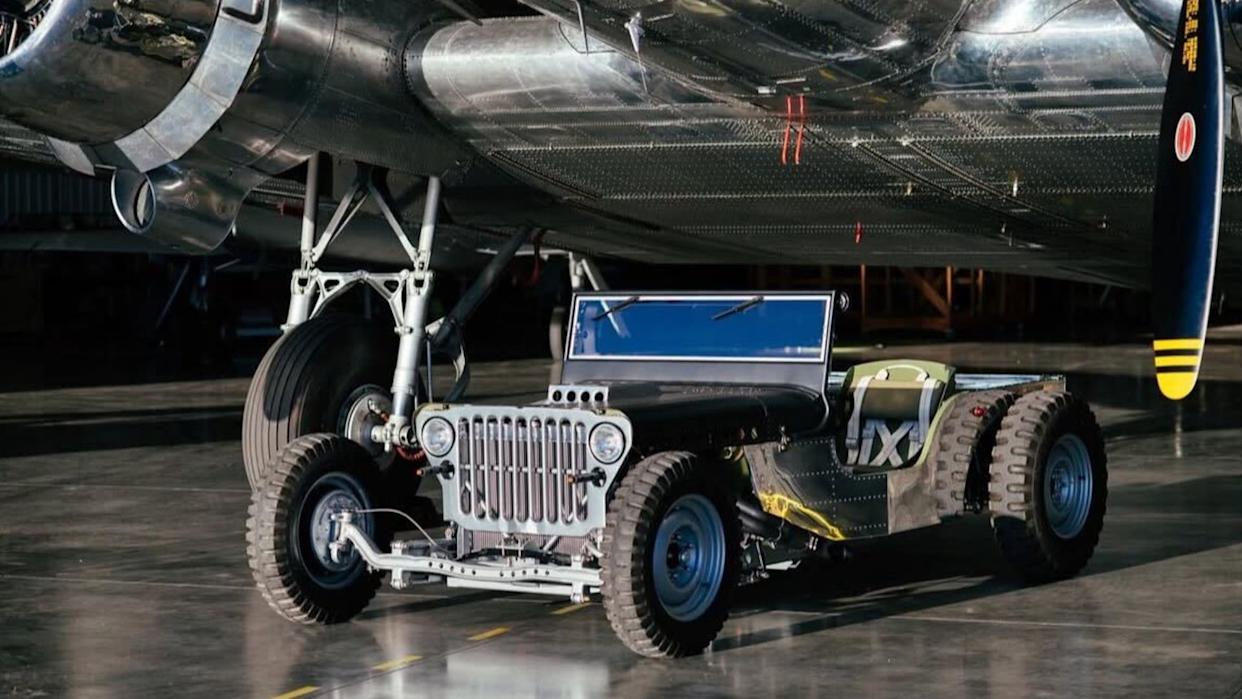
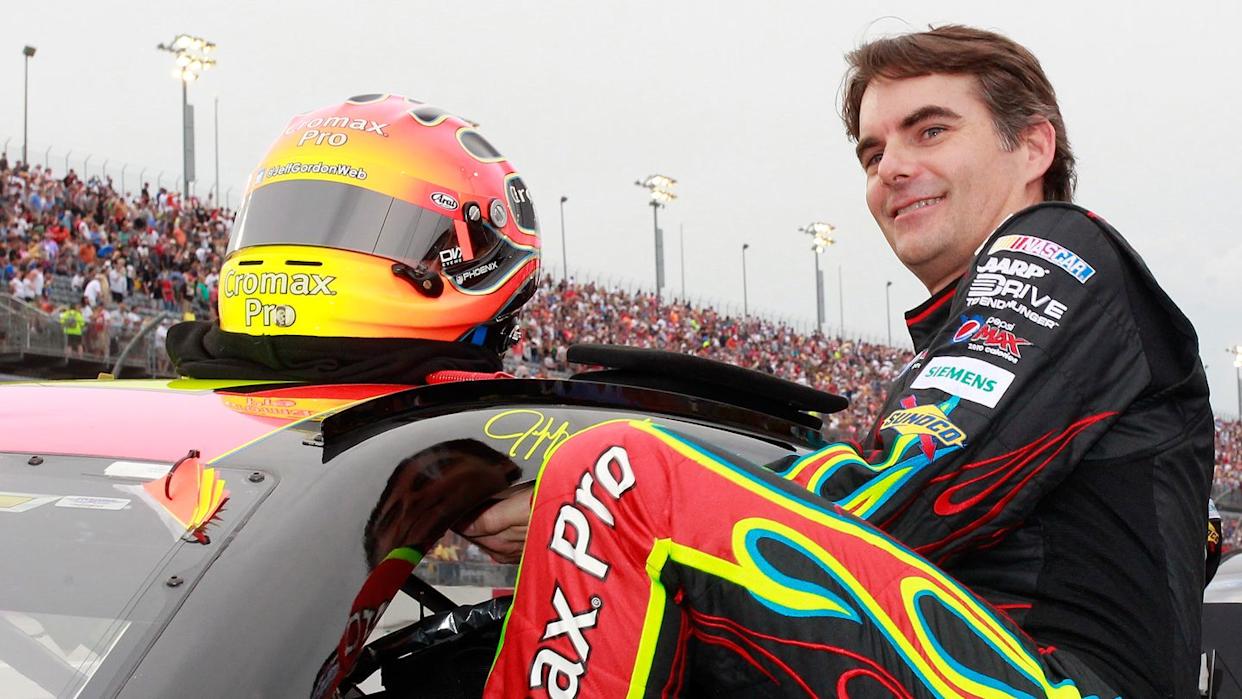
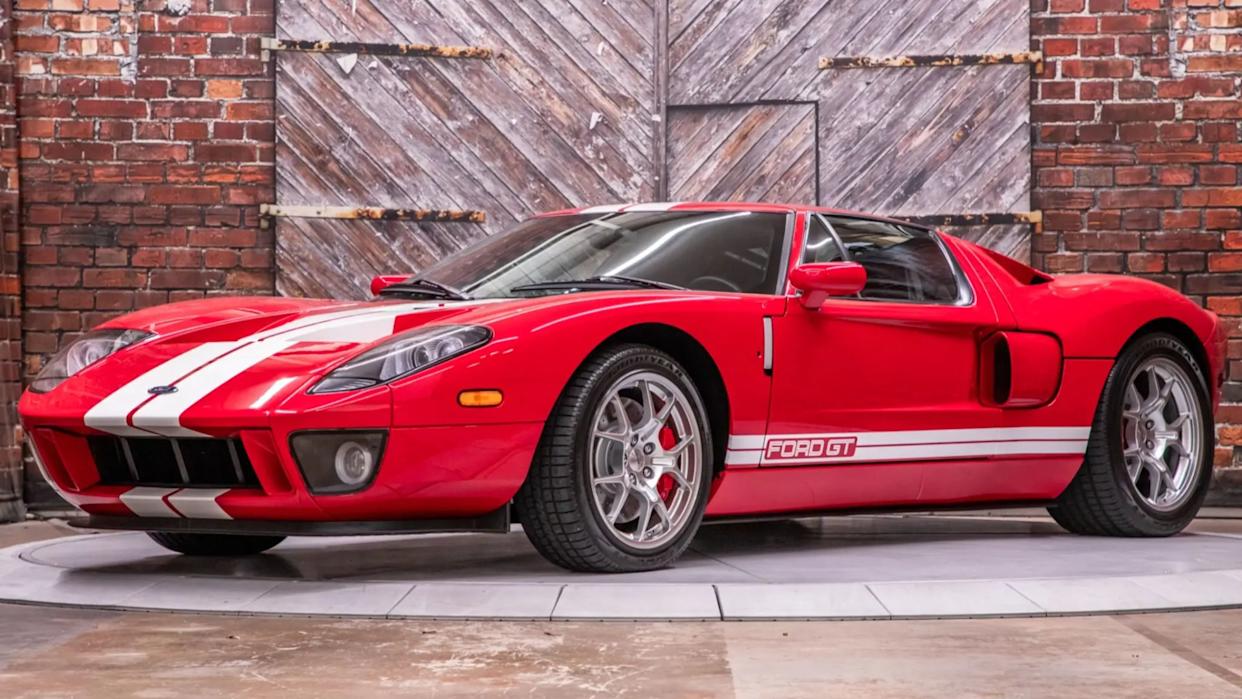
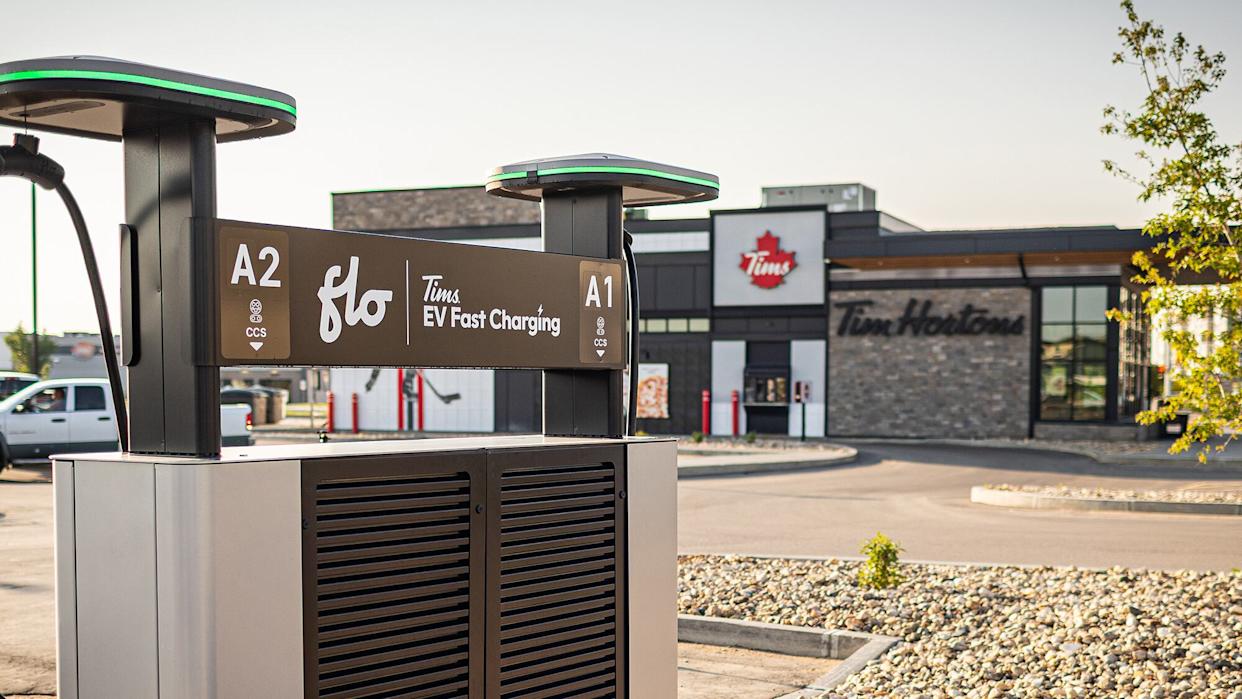
Comments